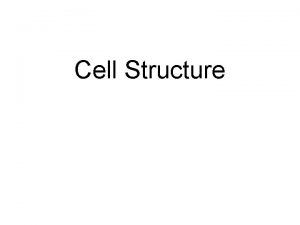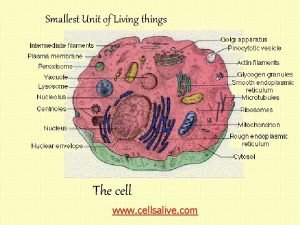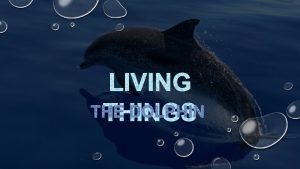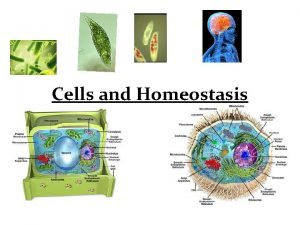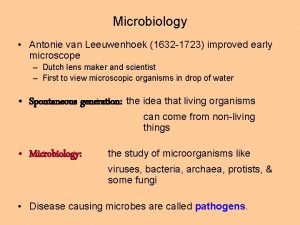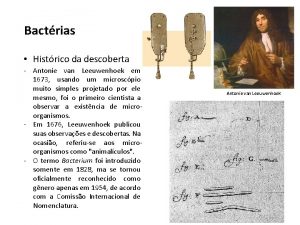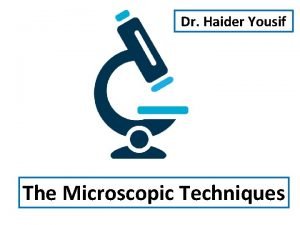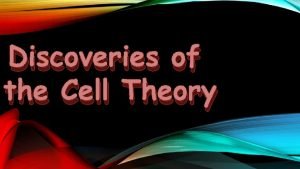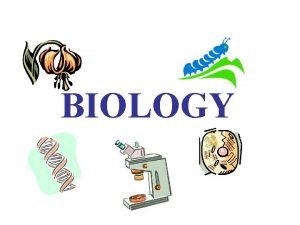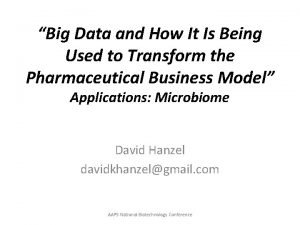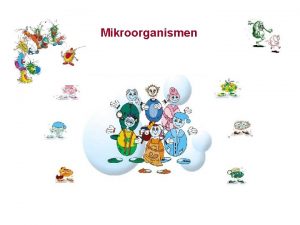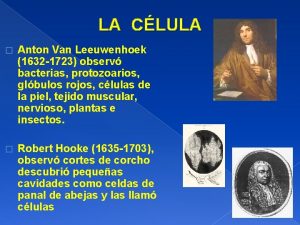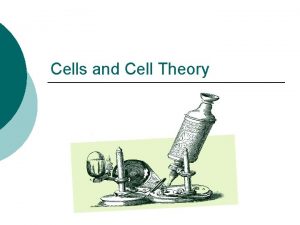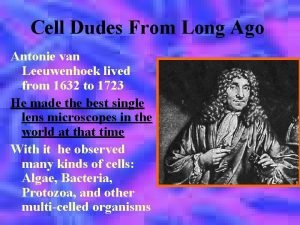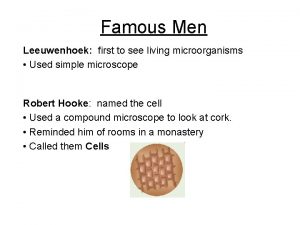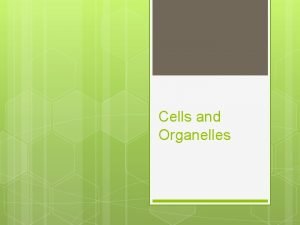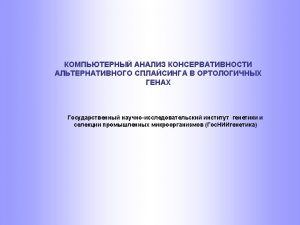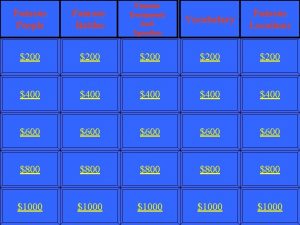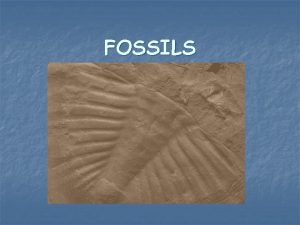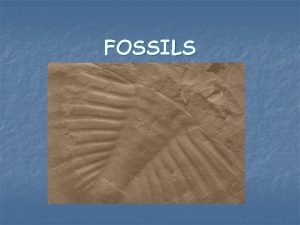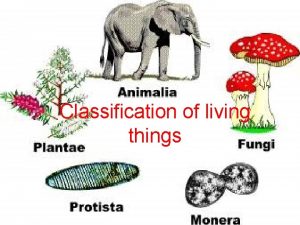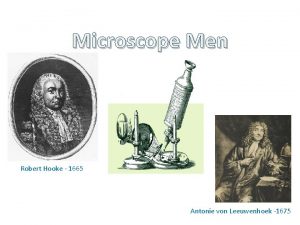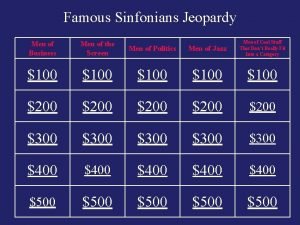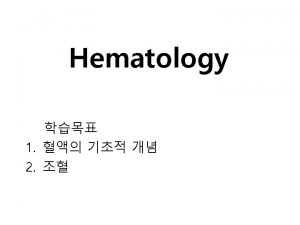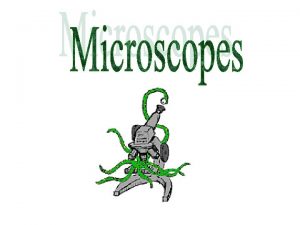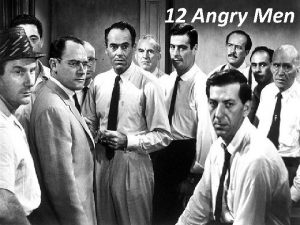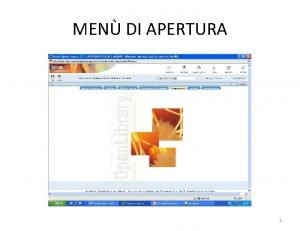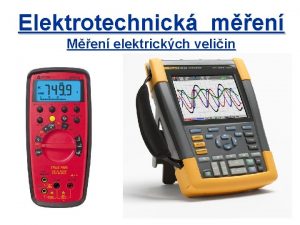Famous Men Leeuwenhoek First to view living organism


















- Slides: 18

Famous Men Leeuwenhoek: • First to _______view living organism__ using a simple microscope Robert Hooke: • Credited for ___naming cells, and viewed dead organism using a microscope_______ • He used a compound microscope to look at cork and it reminded him of rooms in a monastery so he called them _CELLS__.

Cell Theory Three Scientist whose work was used to create the cell theory: T. Schwann: sounds like Swan – __all animals were made of cells_______ M. Schleiden: ____all plants were made of cells_______ Virchow: _all cells come from preexisting cells_____________ CELL THEORY (3 parts): 1. _____ALL living things are made of cells_______ unicellular- 1 cell multicellular- 2+ cells 2. ____Cells are the basic unit of structure and function____ cells tissue Organ system 3. ___Cells come from preexisting cells_____ organism Skin Cell

Cell Structure and Function • Cells vary in size. Longest cell – _stem cell__ (up to 2 meters long) • Smallest cell – _bacterium Largest cell – __egg cell__ • Cells vary in shape. _Shape_ is often related to _its function. Shape - Blood cells are biconcave disk (both _______ faces of the disk have shallow bowl-like …………. . Indention) Function -carries oxygen and removes the _________ CO 2

2 Cell Types: Prokaryote Eukaryote • Contains cell wall and cell membrane Contains nuclear envelope • Single celled organisms (unicellular) Contains cell wall (PLANTS not animal) • Does not have membrane bound organelles (ie. Does not have a mitochondria) Made up multi-cellular organisms Cell division is by mitosis or miosis • Cell division is BINARY More complex and extensive DNA

Organelle Structure and Function Plasma membrane (_cell membrane_) • Present in both eukaryotic and prokaryotic cells • Structure: Phospholipid bilayer-forms a stable barrier between two aqueous compartments controls what enter and leaves the cell) • Acts as a protection for the cell

Cell Wall • Rigid Structure – _tough, inflexible barrier, it also acts as a pressure vessel (meaning it will prevent over expansion when water enters the cell) • Surrounds _the cell__________ • Provides _structural support and protection______ Ex. Plants, Fungi, some protist and bacteria

Nucleus Nuclear membrane Nucleolus Chromatin • Nucleus – _control center of cell_(contains chromatin) • Chromatin – __chromosomes(DNA/RNA)______ • Nucleolus – located in the _CENTER_ of the nucleus, ___________

Endoplasmic Reticulum Ribosomes • Found on the _Endoplasmic Reticulum___ or in the _cytoplasm__ • Site of __protein synthesis_____ Cytoplasm • _Jelly like substance between the cell membrane___ and ___organelles_____ • Surrounds the organelles inside the cell • A place for chemical reactions to take place

Endoplasmic Reticulum (ER) • Folded membrane (_provide a large amount of surface area where cellular functions can take place) • Assembles and transports _proteins_ and ____lipid synthesis__ • __Rough ER__ has attached ribosomes Smooth ER Rough ER

Golgi Apparatus (body) • Modification and shipping of proteins and ready for distribution outside of cell. • Packaged into _vesicles_ Vacuole • _Storage_ of food, water, and waste • __Plant cells___– usually contains large vacuoles__

Mitochondrion • Produces ___energy___ (ATP) for the cell • Inner _folded_ membrane increases production, the greater the surface area the more area for production of _ATP_.

Chloroplast • __Photosynthesis_ happens here • Contains _chlorophyll that absorbs __sunlight_ (which gives the green pigment) • Light energy + CO 2 + H 2 O glucose + O 2

Microtubules and Microfilaments • Protein fibers involved in the structure of the cytoskeleton (support_ and _shape of the cell) • Click here for video of cytoplasmic streaming. (You may need to open a new window. ) Lysosome • Used to __break down materials through digestive enzymes_____ • Used to break down the excess and worn out Substance when it is unusable_

Cilia • Short __hair_____ projections from membrane • _helps with movement_____ • View clip of Paramecium using cilia. You will need to close the powerpoint window for each video clip. Flagella • Long __tail___ structure that extend from the cell membrane • _Helps to migrate • Example: sperm cell____ • Click here to view a clip of a sperm cell using a flagellum (look closely, it is hard to see!!! • Usually 1 or 2 on a cell • Click here to watch video of cilia and flagellum.

Pseudopod – extensions of cytoplasm that are used to _ingesting nutrients or food particles. This is an amoeba – it moves like a “false foot. ”

Contractile Vacuole – a structure that helps removes waste out of the cell Euglenas live in freshwater so water enters their cells and they need a way to get rid of the extra water.

Eyespots Eyespot – organelle __photoreceptive______ Euglenas can use their eyespot to detect light. Light is needed for the __making ATP(food)_. Remember - chloroplasts need light in order photsythesize (glucose).

3 differences between plant and animal cells • __Plant has a Cell Wall___ • _Plants have a LARGE vacuole_ • _Animal cell is much larger than plant cell_
 Food webs and energy pyramids answer key
Food webs and energy pyramids answer key Cell theory
Cell theory Smallest unit of life
Smallest unit of life Dolphin kingdom
Dolphin kingdom What is the smallest living unit in the body
What is the smallest living unit in the body Leeuwenhoek microscope parts
Leeuwenhoek microscope parts Contribution of antonie van leeuwenhoek in microbiology
Contribution of antonie van leeuwenhoek in microbiology 1673 anton van leeuwenhoek
1673 anton van leeuwenhoek Anton van leeuwenhoek
Anton van leeuwenhoek Anton van leeuwenhoek cell theory
Anton van leeuwenhoek cell theory Free earlobes vs attached
Free earlobes vs attached Anton van leeuwenhoek
Anton van leeuwenhoek Anton von leeuwenhoek
Anton von leeuwenhoek Antoni van leeuwenhoek bakterien
Antoni van leeuwenhoek bakterien Anton van leeuwenhoek célula
Anton van leeuwenhoek célula Luisa olivera
Luisa olivera Antonie van leeuwenhoek cell theory
Antonie van leeuwenhoek cell theory Anton van leeuwenhoek cell theory 1673
Anton van leeuwenhoek cell theory 1673 Antonie van leeuwenhoek
Antonie van leeuwenhoek

